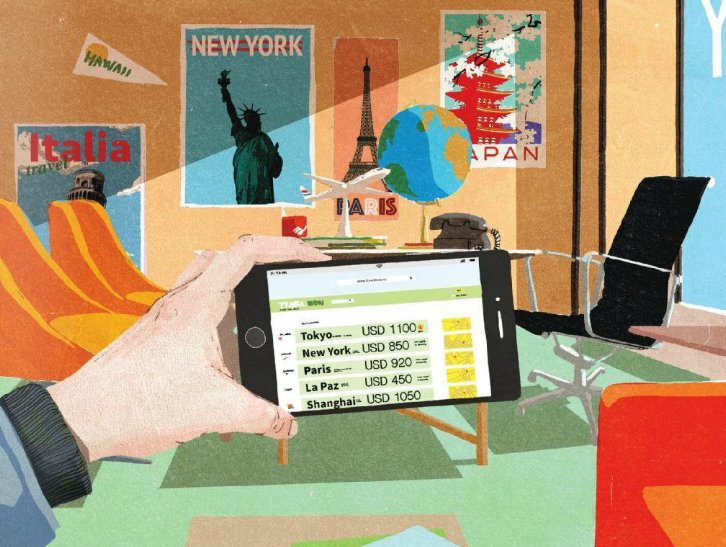Written for the Airline Passenger Experience Association
APEX Experience Magazine – Issue 6.3 – June/July 2016
New Distribution Capabilities. No, it isn’t a drone-based package delivery system. And it isn’t a viewing infrastructure to binge-watch your favorite program on a smartphone. New Distribution Capabilities, or NDC, is a data protocol, a schema, a standard to permit the interchange of electronic information between airlines and travel agents, ultimately benefitting travelers.
Airlines have been upgrading and streamlining their websites and mobile apps to give customers a rich and enhanced user experience. Electronic boarding passes are de rigueur on smartphones, and now seat maps, document scanning and real-time baggage tracking are improving passengers’ travel experience. Travelers receive an ongoing stream of email offers from airlines and other travel providers, before, during and after their trips.
But with all of this technological and software wizardry, there’s been a growing disconnect between what airlines provide on their own apps, and what’s available to both the “bricks and mortar” travel agents and online travel services. Travel agents worldwide continue to play an integral role in passengers’ trip planning, and want to have access to the rich content being created by the airlines to improve their client service offering.
In development since 2012 by the International Air Transport Association (IATA), NDC has the potential to level the playing field. “Airlines will be able to distribute the entirety of their product portfolio including ancillaries in a consistent manner, across all channels, using rich format such as photos and videos, with the ability to bring new product offerings to market much more quickly,” says Yanik Hoyles, IATA’s Director, NDC Program. “Consumers will benefit from a more transparent shopping experience, with access to all of an airline’s products and service offerings regardless of shopping channel. They will be able to compare the entirety of an airline’s offerings, not just the base fare”
“The biggest benefit is that all parties in the travel supply chain will benefit from NDC, and that is a first in our industry for a very long time,” says Jim Davidson, CEO of Farelogix, a leading airline distribution technology provider. “Farelogix develops both the NDC Application Program Interface (API) for airline connectivity, and the merchandising and pricing engine which is controlled by the airline. In other words, the airlines use these applications to create, price, and deliver their content to third party providers. We donated to IATA the original, or baseline schema which is today the foundation of the NDC schema.”
The industry has come a long way since passengers had to make bookings directly with the airline on the telephone. There may have been an airline ticket office in the biggest hotel of major cities, and travel agencies began springing up in most every town in the 1930s. “In ancient times, airlines were very interested in having travel agencies sell tickets because it was a distribution network for them,” explains Mike Premo, President and CEO of the Airlines Reporting Corporation (ARC). Operating since 1964 in the US, ARC initially focused on ticket transaction settlement, and more recently, on providing the travel industry with technology solutions.
“Airlines had everything from chalkboards to Rolodexes to Lazy Susans, all sorts of efforts to try to manage inventory in a non-automated era.” Computers and data processing were a quantum improvement for the airlines, and gave rise to Global Distribution Systems (GDS), like Sabre, Amadeus and Travelport. “The combination of commercial practices and technology all came together in the early 1980s. You could not be an economically viable travel agent and not have a computer in your office,” says Premo.
Now, online travel companies like Expedia and Priceline give travelers another way to purchase services via the web. Travel metasearch sites, such as Hipmunk, Kayak and Skyscanner, add a new layer of aggregated travel information. But the overload of information can be overwhelming for the passenger.
“The consumer wants a more straightforward and easier way to plan and book flights. They want to be the traveler; they don’t want to be the travel agent,” says Henry Hartevelt, travel industry analyst and advisor, and founder of the Atmosphere Research Group. “They want experiences that are richer in context. If I’m choosing a seat on a plane, a seat map is fine, but why not show me the view out the window. What travelers want is context and understanding. And NDC can bring that to the marketplace.”
If a traveler shares information – such as their frequent flyer number – during an NDC-enabled travel search, an airline could provide an offer tailored to that passenger. Recognizing the traveler’s status, the offer might include a lounge pass, a discount to entice bookings on off-peak flights, or perhaps a time-limited “book now!” meal voucher.
“What this really does, is introduce for the first time, the potential for airlines to be true retailers. Once NDC starts to be implemented on a wider basis, it will enable airlines to be much more creative in how they choose to go to market with their various products and offers,” says Hartveldt.
Read the original story in APEX Experience Magazine – Issue 6.3
